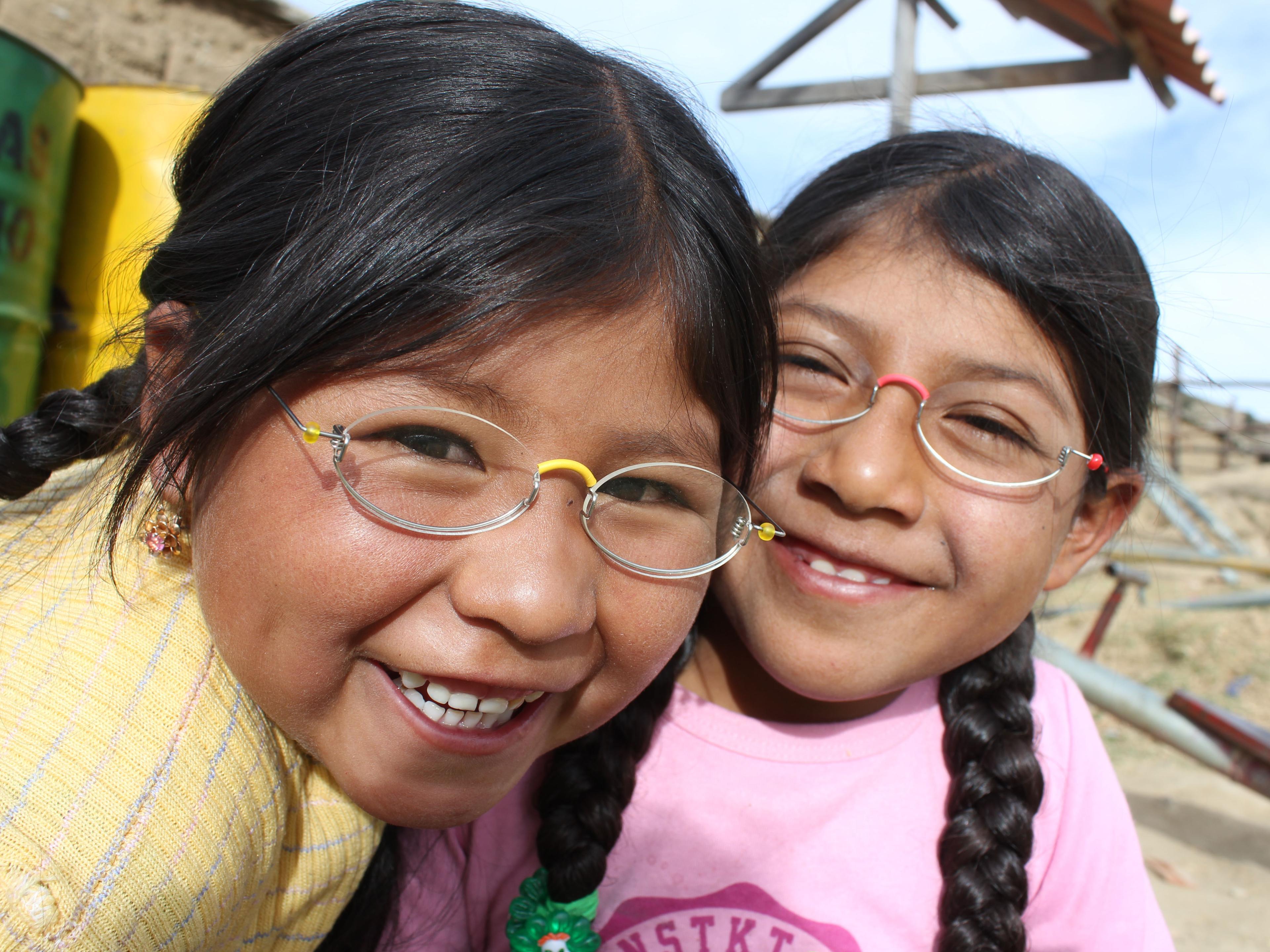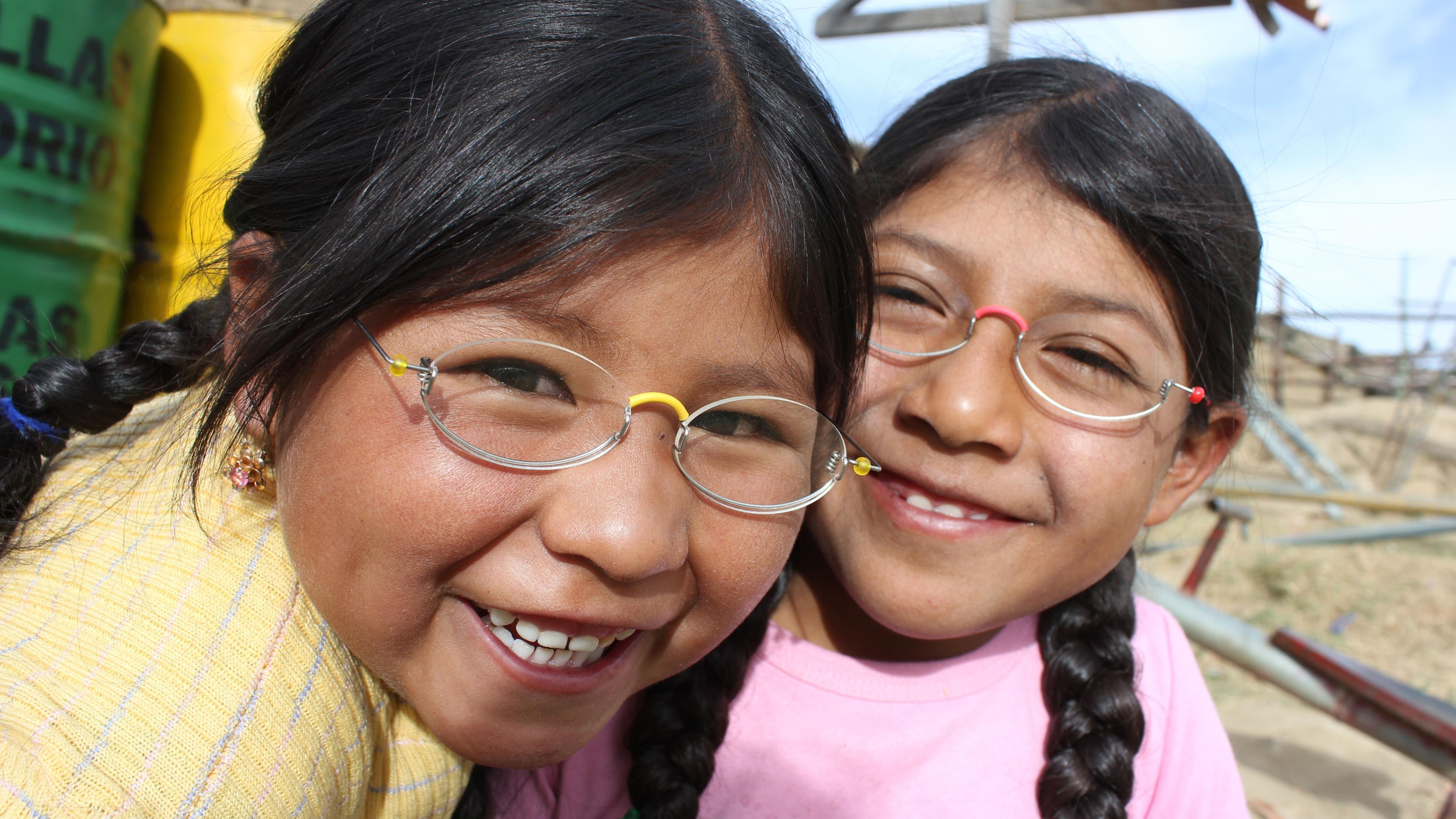We have collected the most common questions and answers about GoodVision here in the FAQ section, e.g. on the types of visual impairments, how you can donate and how we use your funds:
Donations
For all donations over 50 EUR received by us in the course of a calendar year, we will send the donation confirmations collected by February of the following year.
Please understand that this is due to cost savings which is the easiest way for us. Enquiries, requests for appointments and other special cases cost us a lot of time and administrative effort, especially for donations of up to 300 euros.
The confirmation of the donation is usually sent by post, on request of course also by email (with a secure download link).
The EinDollarBrille e.V. is recognised by the Erlangen tax office as a non-profit organisation.
The following legal regulations on the subject of donation receipt/proof of donation are currently valid in Germany:
Donations up to 300 euros
(Simplified proof of donation without donation receipt)
Donations up to 300 euros can be made without officialdonation receipt with the payment receipt of the transfer must be submitted to the tax office.
Donations over 300 euros
For donations over 300 euros, you need a donation certificate if your donation is valid at the tax officed. It is important that you have provided your full name and address. If we still lack this information, we would be happy to receive an email stating the date of the donation and the amount of the donation to spenden@eindollarbrille.de
There are several reasons for this:
- For donations that we receive during the calendar year, we send out donation receipts by February of the following year to save costs.
- If you donate at the turn of the year, it is possible that your donation will not be posted to our account until the new year due to the holidays. The criterion for the receipt is the posting date on our donation account (regardless of whether you have sent us the direct debit or transfer of your donation in the old year).
Thank you for wanting to raise funds for GoodVision.
In order to associate the donations with your event, you must include the appropriate information in the purpose of the transfer (e.g., "Joe's Birthday"). After your event, we can provide you with the names of the donors and the total amount of donations received, if you wish. If your guests need a receipt for their donation, you will need to include their full address in the intended use of each transfer.
You also have the option of receiving a donation box (made of environmentally friendly cardboard) and information material for your guests.
More information can be found here.
In preparing its annual financial statements, EinDollarBrille e.V. is guided by the guidelines of the DZI (Deutsches Zentralinstitut für soziale Fragen) and its criteria for the DZI donation seal. The association's accounts are kept in accordance with the recommendations of the German Commercial Code (HGB) and are audited and certified by a certified public accountant.
More information on transparency can be found here.
Every small contribution has a big impact and helps us improve the lives of people in the Global South. A single Euro is enough to make a commitment to good vision: for example, it pays for the materials to make a pair of OneDollarGlasses, including the lenses.
Find out more about the Manufacture of glasses.
Inform
We use the donations we receive in a variety of ways: the money goes toward the cost of materials for the eyeglasses, as well as the purchase of bending machines and tools. On the other hand, the money is used to establish a distribution system in the countries by setting up shops in the major cities and conducting eye camps in rural areas, as well as to raise awareness of the importance of good vision through educational campaigns. We train local people to conduct the eye screenings, and this year-long training is made possible only through donations. The salaries of our production and sales specialists are also funded by donations.
You can find more information in our annual reports.
We are pleased to receive many requests for topics and questionnaires from schools and universities, as we see this as recognition of our work.
Unfortunately, we are unable to respond to most requests, especially for personal interviews and questionnaires. As a nonprofit organization, we strive to keep personnel costs as low as possible.
We have prepared a lot of information on our website and also in our annual reports and are sure that many questions will be answered with it.
Support
Thank you for supporting our work. However, we do not accept used eyeglasses because we take a different approach with the GoodVision Glasses. There are many reasons for this:
- It takes a lot of effort to find the "right eyes" for your old glasses. Even if you find them, if they get scratched, lost or broken, you have a problem. A suitable replacement is rarely available or affordable. Then the proud owner of the old glasses may have only briefly experienced how much easier life is with glasses.
- That is why we offer simple, standardized programs in our program countries, handmade by local workers. The lenses are a fixed size, so they are easy to insert or replace, and no technical equipment is needed to complete the glasses. This is important because there is often insufficient electricity in the remote areas where we work.
However, we would be delighted if you could support our glasses project with a slightly different and more sustainable approach.
Thank you for your interest in the EinDollarBrille e.V. and your offer to support us. The number of EinDollarBrille e.V. projects and thus the tasks in Germany and in the target countries are constantly increasing.
New committed volunteers are always welcome.
EinDollarBrille e.V. information days are a great way to get to know each other. They are held regularly in the various regional groups. There you will learn how the projects work in the different countries, what tasks are required in Germany and in the target countries, how you can get involved yourself or how a cooperation (e.g. with an association) could look like.
There you can ask all your questions about EinDollarBrille e.V. and have the opportunity to bend glasses yourself. Attending an information session is non-binding and free of charge.
For more information on scheduling an event, please contact the appropriate regional group.
- Berlin rg-berlin@eindollarbrille.de
- Bremen rg-bremen@eindollarbrille.de
- Erlangen rg-erlangen@eindollarbrille.de
- Rhein-Main rg-rhein-main@eindollarbrille.de
- Hamburg rg-hamburg@eindollarbrille.de
- Hannover rg-hannover@eindollarbrille.de
- Rhein-Ruhr rg-rhein-ruhr@eindollarbrille.de
- Munich rg-muenchen@eindollarbrille.de
- Stuttgart rg-stuttgart@eindollarbrille.de
All current appointments can also be found on our homepage at:
On our website you will also find our open positions in volunteering as well as in the main office at:
We appreciate your interest in EinDollarBrille e.V.. Our partnership team informs you here about the possibilities of cooperation.
Ophthalmology
Astigmatism, also known as corneal curvature.
Astigmatism is caused by a curvature of the cornea or lens that refracts horizontally incident light differently than vertically incident light. Instead of being bundled into a single focal point, the incident rays of light are split into two focal lines. Astigmatism can only be corrected with cylindrical/toric lenses, not spherical lenses.
Diopter is a unit of refractive power and is the reciprocal of the distance in meters between the lens and the focal point.
Diopters indicate the power of the lens.
In medicine, the fundus is the background or floor of an organ, in our case the fundus of the eye. The fundus is the visual area of the retina. It is visible when you look into the eye through the pupil.
Clarity, farsightedness: The refractive power of the eye is too low and/or the length of the eyeball is too short. With sufficient accommodation (autofocus), the eye sees sharply at a distance. Farsightedness is corrected with positive lenses.
Cataract is a clouding of the lens of the eye. It is a progressive process that leads to increased sensitivity to glare, but more importantly, to a decrease in visual acuity, including blindness. A simple operation to replace the diseased lens with an artificial lens can prevent blindness.
Near-sightedness: The refractive power of the eye is too strong and/or the eyeball is too long. The eye sees blurred in the distance and is corrected with negative lenses.
The retina: It is made up of cones for daytime vision. The rods allow us to see in the twilight. The stimuli from the photoreceptors are transmitted to the brain via the optic nerve.
Spherical lenses have the same power over the entire surface. Spherical lenses can correct nearsightedness, farsightedness and presbyopia, but not astigmatism.
In a spherical correction, the proportions of nearsightedness and farsightedness are corrected. Astigmatism (corneal curvature) cannot be corrected.
Studies have shown that with optimal spherical correction, approximately 80% of people can be helped to the point where they can drive safely.



